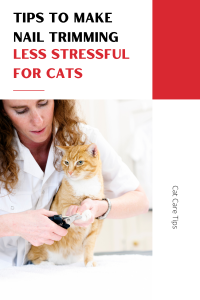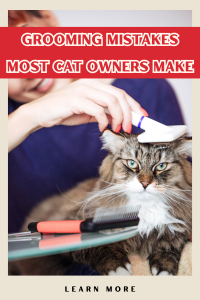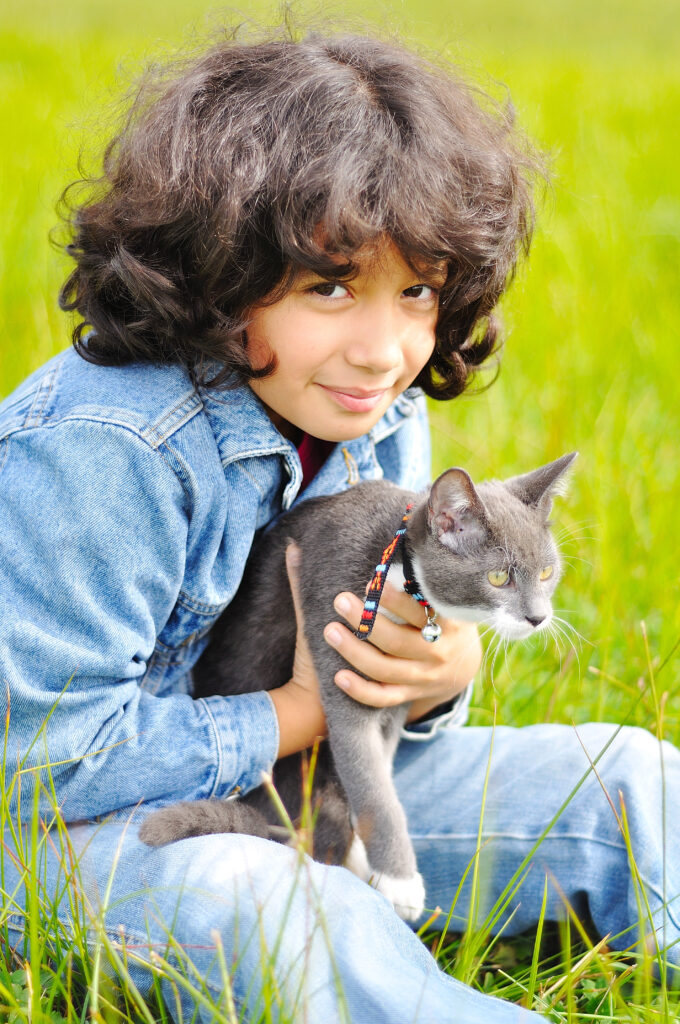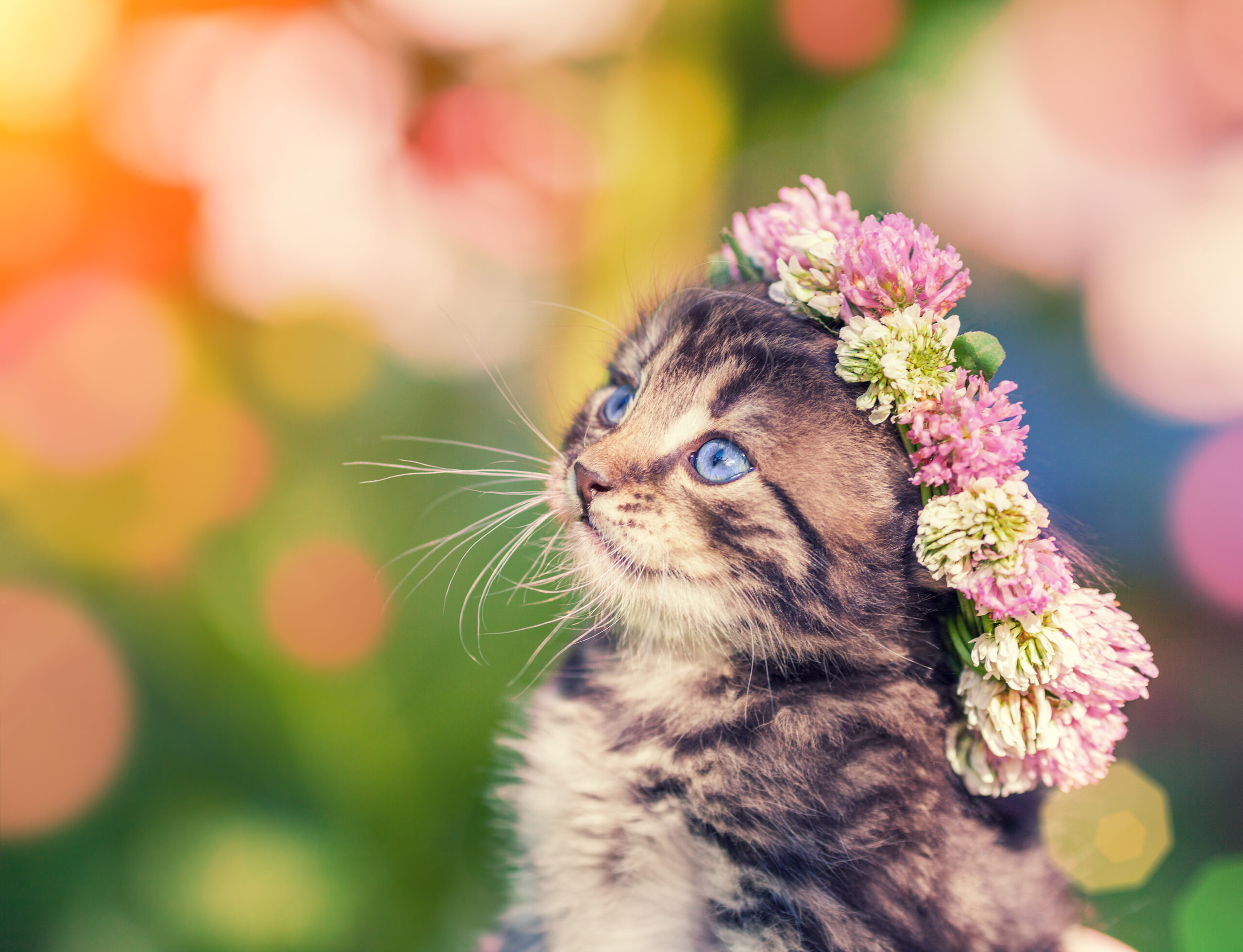Cat Behavior
Your Cat Will Love – Healthy Homemade Treats
Healthy Homemade Treats: A Delicious Path to a Happier, Healthier Cat
As devoted cat parents, we want nothing but the best for our feline companions. We meticulously choose their food, ensure they have comfortable resting spots, and shower them with affection. But when it comes to treats, many of us reach for the readily available, often highly processed options found in pet stores. While convenient, these commercial treats can sometimes contain questionable ingredients, fillers, and artificial additives that offer little nutritional value. What if there was a way to provide your beloved cat with delectable snacks that are not only irresistibly tasty but also genuinely beneficial for their health? Enter the wonderful world of healthy homemade cat treats.

Why Go Homemade? The Benefits for Your Feline Friend
The decision to embark on a homemade treat journey for your cat is more than just a culinary adventure; it’s a commitment to their well-being. Here’s why making your own cat treats is a game-changer:
- Ingredient Control: You Know Exactly What’s Going In. This is arguably the most significant advantage. When you make treats yourself, you have complete control over every single ingredient. You can select fresh, human-grade meats, vegetables, and other wholesome components, ensuring there are no artificial colors, flavors, preservatives, or unnecessary fillers that can be detrimental to your cat’s health. This is especially crucial for cats with allergies or sensitivities, as you can tailor recipes to exclude specific problematic ingredients.
- Enhanced Nutrition: Boosting Their Diet. Commercial treats, even those marketed as “healthy,” often prioritize palatability over nutritional density. Homemade treats, on the other hand, can be packed with vitamins, minerals, and essential nutrients that complement your cat’s regular diet. You can incorporate lean proteins, fiber-rich vegetables, and healthy fats that contribute to their overall vitality.
- Avoiding Harmful Additives: A Cleaner Diet. Many commercial treats contain a cocktail of artificial additives, including dyes, BHA, BHT, and ethoxyquin, which are used for preservation or visual appeal but have been linked to various health issues in pets. By going homemade, you eliminate these questionable chemicals, providing a cleaner and safer dietary experience for your cat.
- Tailored to Preferences: A Personalized Culinary Experience. Just like humans, cats have distinct tastes and preferences. One cat might adore salmon, while another prefers chicken. Homemade treats allow you to experiment and discover what your individual cat truly loves. This personalization not only makes treat time more enjoyable for them but also ensures they’re actually consuming the beneficial ingredients.
- Cost-Effective in the Long Run: While the initial outlay for quality ingredients might seem a bit more, making treats in bulk at home can often be more cost-effective than repeatedly buying premium commercial treats. Plus, you’re investing in your cat’s long-term health, potentially reducing future veterinary bills.
- Strengthening Your Bond: A Labor of Love. There’s something undeniably special about offering your cat a treat you’ve lovingly prepared yourself. It’s a tangible expression of your care and affection, and your cat will undoubtedly pick up on the positive energy associated with these special snacks. It can be a wonderful bonding experience for both of you.
Essential Considerations Before You Start Baking
Before you don your apron and preheat the oven, a few crucial points need to be considered to ensure the safety and health of your feline chef’s critics:
- Consult Your Veterinarian: Always, always, always discuss any significant dietary changes, including the introduction of homemade treats, with your veterinarian. They can offer personalized advice based on your cat’s specific health needs, age, and any existing conditions. This is particularly important if your cat has kidney disease, diabetes, or other chronic illnesses.
- Familiarize Yourself with Cat-Safe Ingredients: Not all human foods are safe for cats. A definitive list of toxic foods includes onions, garlic, chives, chocolate, grapes, raisins, avocado, alcohol, and xylitol (an artificial sweetener). Always double-check ingredients if you’re unsure. Stick to lean cooked meats, certain cooked vegetables, and limited grains.
- Portion Control is Key: Even healthy treats can lead to weight gain if overfed. Treats should only make up a small percentage (ideally less than 10%) of your cat’s daily caloric intake. Remember, they are supplements, not meal replacements.
- Proper Storage is Crucial: Homemade treats lack the artificial preservatives found in commercial varieties. This means they have a shorter shelf life. Store them in airtight containers in the refrigerator for a few days, or freeze them for longer storage (up to a few months). Always check for spoilage before offering them to your cat.
- Cooking Meats Thoroughly: Any meat used in cat treats must be cooked thoroughly to eliminate harmful bacteria like Salmonella. Avoid raw meat, even if your cat is accustomed to it, when making treats that will be stored.
Purr-fectly Simple Recipes to Get You Started
Here are a few easy, healthy, and cat-approved homemade treat recipes to spark your culinary creativity:
1. Tuna Bites:
- Ingredients: 1 can (5 oz) plain tuna in water (drained), 1/4 cup oat flour (or finely ground oats), 1 egg (lightly beaten).
- Instructions: Preheat oven to 350°F (175°C). In a bowl, mash the drained tuna. Add the oat flour and beaten egg, mixing until a firm dough forms. Roll the dough into small, pea-sized balls or flatten and cut into tiny squares. Place on a parchment-lined baking sheet. Bake for 10-12 minutes, or until firm and slightly golden. Let cool completely before serving. Store in the refrigerator.
2. Chicken & Sweet Potato Chews:
- Ingredients: 1/2 cup cooked and shredded chicken breast (no seasoning), 1/4 cup cooked and mashed sweet potato (plain).
- Instructions: Preheat oven to 300°F (150°C). In a bowl, combine the shredded chicken and mashed sweet potato. Mix well until thoroughly combined. Roll the mixture into small, thin logs or flatten and cut into small shapes. Place on a parchment-lined baking sheet. Bake for 20-25 minutes, or until the treats are firm and slightly dry. Allow to cool completely. Store in the refrigerator.
3. Sardine Fishy Delights:
- Ingredients: 1 can (3.75 oz) sardines in water (drained and rinsed well), 1/4 cup whole wheat flour, 1 tablespoon fresh parsley (finely chopped, optional, but good for breath!).
- Instructions: Preheat oven to 325°F (160°C). In a bowl, mash the drained and rinsed sardines. Add the whole wheat flour and parsley, mixing until a thick dough forms. Roll out the dough to about 1/4 inch thickness and use a small cookie cutter (or a knife) to cut into tiny shapes. Place on a parchment-lined baking sheet. Bake for 15-20 minutes, or until firm and slightly crisp. Cool completely before serving. Store in the refrigerator.
4. Simple Salmon Jerky:
- Ingredients: 4 oz boneless, skinless salmon fillet.
- Instructions: Preheat oven to 275°F (135°C). Slice the salmon very thinly against the grain (this helps it dry faster). Arrange the salmon slices in a single layer on a parchment-lined baking sheet. Bake for 1.5 to 2 hours, flipping halfway through, or until the salmon is completely dry and brittle. Allow to cool completely. Break into small pieces. Store in an airtight container in the refrigerator for up to a week, or freeze for longer.
5. Oat & Catnip Cookies:
- Ingredients: 1/2 cup finely ground oats, 2 tablespoons dried catnip, 1 tablespoon water (add more if needed to form a dough).
- Instructions: Preheat oven to 300°F (150°C). In a bowl, combine the ground oats and catnip. Gradually add water, mixing until a stiff dough forms. Roll the dough into small, flat discs or use tiny cookie cutters. Place on a parchment-lined baking sheet. Bake for 10-15 minutes, or until firm. Cool completely before offering. Store in an airtight container at room temperature.
Tips for Success and Happy Cats:
- Start Small: When introducing new treats, offer just one or two at a time to see how your cat reacts.
- Texture Matters: Some cats prefer crunchy treats, while others like softer, chewier ones. Experiment with baking times to achieve different textures.
- Get Creative with Molds: Small silicone molds (like those for candy or ice cubes) can create fun shapes and portion sizes.
- Involve the Family: Making treats can be a fun activity for the whole family, even kids (with supervision).
- Observe and Adjust: Pay attention to your cat’s reactions. If they love a particular ingredient, incorporate more of it. If they turn their nose up, try something different next time.
- Don’t Be Afraid to Experiment: Once you’re comfortable with basic recipes, feel free to experiment with other cat-safe ingredients like cooked chicken livers (a feline favorite!), pumpkin puree (great for digestion), or even a tiny pinch of nutritional yeast for a cheesy flavor.
Making healthy homemade treats for your cat is a rewarding endeavor that offers numerous benefits. It’s a way to provide them with superior nutrition, avoid harmful additives, and strengthen the special bond you share. So, step into your kitchen, embrace your inner chef, and prepare to delight your feline companion with delicious, wholesome treats made with love. Your cat will not only love them, but they’ll thrive on them, too.
Tips to Make Nail Trimming Less Stressful for the Cat
In the quiet hum of many cat-owning households, one task often looms large with trepidation: nail trimming. What should be a routine part of feline care can quickly escalate into a wrestling match, leaving both cat and human frazzled. However, with patience, the right approach, and a few key tips, nail trimming can become a less stressful, even tolerable, experience for your beloved feline friend.
 The first, and perhaps most crucial, tip is early introduction and positive association. Ideally, start handling your kitten’s paws from a young age, gently touching their toes and rewarding them with treats or praise. This desensitization process teaches them that paw handling is not a threat. Even with an adult cat, you can gradually introduce positive associations. Before you even bring out the clippers, simply touch their paws, offer a high-value treat, and release. Repeat this multiple times a day, slowly increasing the duration of the touch.
The first, and perhaps most crucial, tip is early introduction and positive association. Ideally, start handling your kitten’s paws from a young age, gently touching their toes and rewarding them with treats or praise. This desensitization process teaches them that paw handling is not a threat. Even with an adult cat, you can gradually introduce positive associations. Before you even bring out the clippers, simply touch their paws, offer a high-value treat, and release. Repeat this multiple times a day, slowly increasing the duration of the touch.
Next, choose the right time and place. Avoid attempting nail trims when your cat is overly energetic, stressed, or hungry. A calm, quiet environment is key. Consider trimming after a play session when your cat is naturally more relaxed, or when they are in a sleepy state, perhaps curled up on your lap. Ensure the room is well-lit so you can clearly see the quick, the sensitive pink part of the nail that contains blood vessels and nerves. Cutting into the quick is painful and can make your cat extremely averse to future trims.1
Invest in quality tools. Sharp, cat-specific nail clippers are essential. Dull clippers can crush the nail, causing discomfort and splintering.2 There are various types available, including scissor-style and guillotine-style.3 Experiment to see which you find easiest to use and which your cat tolerates best. Some owners also find a nail grinder helpful, as it provides a smoother finish and reduces the risk of cutting too deep, though this also requires a period of desensitization to the sound and vibration.
When it’s time to trim, approach with confidence and gentleness. Hold your cat securely but not restrictively. A towel wrap (burrito style) can be helpful for particularly squirmy cats, providing a sense of security and limiting their ability to struggle.4 Gently extend each toe, isolating the nail. Press lightly on the top of the paw and the bottom of the toe pad to extend the nail fully. Only snip the very tip of the clear part of the nail, avoiding the quick. If you’re unsure, err on the side of taking off too little rather than too much.
Keep it short and sweet. Don’t try to trim all of your cat’s nails at once, especially when you’re starting out. Aim for one or two nails per session, gradually increasing the number as your cat becomes more comfortable. Even if you only manage one nail, celebrate the small victory with a treat and praise. This positive reinforcement reinforces that the experience is not something to be feared.
Finally, remain calm and patient. Cats are highly perceptive and can pick up on your stress.5 If you’re anxious, your cat will likely become anxious too. Take deep breaths, speak in a soothing voice, and remember that setbacks can happen. If a session goes poorly, don’t push it. Try again later or the next day. Consistency and a positive attitude will ultimately lead to a less stressful nail trimming routine for both you and your feline companion, ensuring their paw health and your peace of mind.
Sources:
- American Society for the Prevention of Cruelty to Animals (ASPCA). “Trimming Your Cat’s Claws.” ASPCA.org. Available at: https://www.aspca.org/pet-care/cat-care/trimming-your-cats-claws (Accessed July 28, 2025).
- The Humane Society of the United States. “Trimming Your Cat’s Claws.” Humanesociety.org. Available at: https://www.www.humanesociety.org/resources/trimming-your-cats-claws (Accessed July 28, 2025).
- Cornell Feline Health Center. “How to Trim a Cat’s Claws.” Vet.cornell.edu/departments/cornell-feline-health-center. Available at: https://www.vet.cornell.edu/departments/cornell-feline-health-center/health-information/periodical-articles/cat-watch/how-trim-cats-claws (Accessed July 28, 2025).
Grooming Mistakes Most Cat Owners Make

Cats are often perceived as self-sufficient grooming experts, meticulously cleaning themselves with their barbed tongues and nimble paws. This innate fastidiousness can sometimes lull cat owners into a false sense of security, leading them to believe that their feline companions require minimal, if any, human intervention in their grooming routine. However, this is a common misconception that can lead to a host of problems, from painful matting and skin irritations to behavioral issues.
While a cat’s self-grooming is impressive, it’s not always sufficient, especially for indoor cats, long-haired breeds, seniors, or those with health conditions. Recognizing and avoiding common grooming mistakes can make a world of difference in your cat’s comfort, health, and overall well-being. Let’s delve into the grooming missteps most cat owners make and how to avoid them.
1. Neglecting Regular Brushing (or Brushing Incorrectly)
This is arguably the most pervasive grooming mistake. Many owners underestimate the importance of regular brushing, assuming their cat’s self-grooming is enough.
- The Mistake: Not brushing often enough, especially for long-haired cats or heavy shedder breeds. Using the wrong type of brush, or brushing too harshly.
- The Impact: Leads to excessive shedding throughout the home, increased hairball formation (which can cause digestive blockages), and the development of painful mats and tangles. Harsh brushing can cause “brush burn” or skin irritation.
- The Solution: Establish a consistent brushing routine. For short-haired cats, 2-3 times a week may suffice. Long-haired cats often need daily brushing. Invest in appropriate tools: a de-shedding tool (like a Furminator for heavy shedders, used cautiously), a slicker brush, and a wide-toothed comb. Brush gently, always in the direction of hair growth, and pay extra attention to areas prone to matting like armpits, behind ears, and the belly.
2. Ignoring Matting (or Trying to Cut Them Out Incorrectly)
Mats are a serious problem that many owners either overlook or try to fix dangerously.
- The Mistake: Allowing small tangles to progress into large, dense mats. Attempting to cut out mats with scissors, which often results in accidentally cutting the cat’s skin.
- The Impact: Mats are incredibly painful, pulling on the skin and restricting movement. They can hide skin infections, parasites, and even impede blood flow. Cutting them out with household scissors is extremely risky due to how thin and mobile a cat’s skin is.
- The Solution: Prevention through regular brushing is key. If you find a small, loose mat, try to gently work it out with your fingers and a comb, starting from the edges. For larger, tighter, or skin-bound mats, do not attempt to cut them out yourself. This is a job for a professional groomer or veterinarian who can safely shave them off.
3. Improper Nail Trimming (or Skipping It Entirely)
Many owners fear trimming their cat’s nails, leading to overgrown claws.
- The Mistake: Not trimming nails at all, or cutting too much and hitting the “quick” (the blood vessel and nerve within the nail).
- The Impact: Overgrown nails can curve into the paw pads, causing excruciating pain, infection, and lameness. They can also snag on carpets and furniture, leading to broken claws or injuries. Hitting the quick causes pain and bleeding, making future trims terrifying for the cat.
- The Solution: Start young and make it a positive experience with treats. Use sharp, cat-specific nail clippers. Only snip the clear, pointed tip of the nail, avoiding the pink quick. If your cat has dark nails where the quick isn’t visible, trim only the very tip. Have styptic powder (or cornstarch/flour) on hand to stop bleeding if you accidentally cut too deep. If unsure, ask your vet or a groomer for a demonstration.
4. Infrequent or Incorrect Bathing
While most cats rarely need baths, some situations call for one, and owners often get it wrong.
- The Mistake: Bathing a cat too frequently (drying out skin/coat) or using human shampoos/soaps. Not preparing properly, leading to a stressful and dangerous experience for the cat.
- The Impact: Frequent bathing can strip essential oils from a cat’s skin and coat, leading to dryness, flakiness, and irritation. Human shampoos are formulated for a different pH balance and can cause skin problems. A chaotic bath experience can traumatize a cat, making future necessary baths impossible.
- The Solution: Only bathe when truly necessary (e.g., covered in something toxic/sticky, severe matting, veterinarian-prescribed medicated baths). Always use a cat-specific shampoo. Prepare everything beforehand: lukewarm water, rubber mat for traction, towels, cotton balls for ears, and treats. Keep the experience calm and quiet. Rinse thoroughly to prevent skin irritation from residue.
5. Neglecting Dental Care
While not strictly “coat” grooming, dental health is a critical part of overall grooming and is frequently overlooked.
- The Mistake: Assuming dry kibble cleans teeth, or ignoring bad breath as “normal cat breath.”
- The Impact: Dental disease (plaque, tartar, gingivitis, periodontal disease) is rampant in cats, causing pain, difficulty eating, and can lead to serious systemic health issues if bacteria from the mouth enter the bloodstream. Bad breath is a sign of infection, not just bad hygiene.
- The Solution: Start a home dental care routine with a cat-specific toothbrush and toothpaste (never human toothpaste!). Aim for daily brushing if possible. Provide dental treats or chew toys approved by your vet. Schedule regular professional dental cleanings at your vet’s office as recommended.
6. Ignoring Stress Signals During Grooming
Cats communicate discomfort, but owners often miss the cues.
- The Mistake: Pushing through when a cat is hissing, growling, swatting, or trying to escape.
- The Impact: Forcing grooming creates negative associations, leading to a cat that actively resists and becomes more aggressive during future attempts. It damages the bond of trust.
- The Solution: Pay attention to your cat’s body language. If they show signs of stress (tail flicking, flattened ears, dilated pupils, tense body, vocalization), stop the session. Keep sessions short and positive, ending before they get stressed. Break down grooming tasks into smaller steps and reward calm behavior with treats and praise.
7. Forgetting the Dewclaws
The dewclaw is often overlooked, leading to painful issues.
- The Mistake: Remembering to trim the main claws but forgetting the dewclaws (the small claw on the inner side of the front paws, like a thumb).
- The Impact: Since dewclaws don’t touch the ground, they don’t wear down naturally and are highly prone to growing into the paw pad, causing severe pain and infection.
- The Solution: Always check and trim the dewclaws during every nail trimming session.
8. Not Adapting Grooming to Age or Health Changes
A cat’s grooming needs change throughout their life.
- The Mistake: Maintaining the same grooming routine for a senior cat as for a young adult, or not adjusting for health conditions.
- The Impact: Older cats may have arthritis, making self-grooming painful or difficult, leading to mats and dirty coats. Cats with underlying health issues (e.g., obesity, dental pain) may also neglect self-grooming.
- The Solution: Be extra vigilant with grooming for senior cats or those with health problems. They will likely need more frequent brushing, bathing, and nail trims as they may be unable to reach certain areas. Consult your vet for advice tailored to their specific needs.
By understanding and rectifying these common grooming mistakes, you can transform a potentially stressful chore into a beneficial and bonding experience for both you and your feline companion. Proactive, gentle, and consistent grooming is a cornerstone of responsible cat ownership, ensuring your beloved cat lives a life of comfort, health, and endless purrs.
Cat Boredom Busters: Apartment Edition
Summary
“Cat Boredom Busters: Apartment Edition” emphasizes that even in an apartment, cats can lead stimulating lives. It begins by explaining that cat boredom, stemming from unfulfilled instincts, can lead to destructive behavior, excessive vocalization, overeating, or depression.
To combat this, the article suggests several “boredom busters”:
- Vertical Adventures: Maximizing vertical space with cat trees, wall-mounted shelves, and window perches allows cats to satisfy their desire for high vantage points.
- Interactive Play: Daily play sessions with wand toys, feather teasers, and supervised laser pointers (ending with a physical toy) engage their hunting instincts. Puzzle feeders turn mealtime into a mental challenge, and automatic toys can entertain when owners are busy.
- Enrichment Beyond Play: Providing a variety of scratching posts, using catnip or silvervine, offering “cat TV,” and considering safe outdoor access like leash training or catios all contribute to sensory enrichment.
- Routine and Bonding: A consistent daily routine and quality time spent with the cat are crucial for their security and overall well-being, strengthening the bond between pet and owner.

Guy with his cat on a desk Photo by Yuliya kota:
https://www.pexels.com/photo/cute-cat-smelling-unrecognizable-bearded-man-on-windowsill-at-home-3791595/
The overall message is that by understanding and addressing a cat’s natural needs, apartment dwellers can create a rich and fulfilling environment for their feline companions.
Living in an apartment with your feline friend doesn’t mean they’re destined for a life of snoozing and window-gazing. While the great outdoors might be off-limits, there are countless ways to transform your compact living space into a stimulating wonderland for your cat. Uncovering the best cat boredom busters for apartment cats is key to a happy, healthy, and well-behaved companion.
Understanding Cat Boredom
Before we dive into solutions, let’s understand why boredom is a problem. Cats are natural predators, hardwired for hunting, exploring, and playing. Their ancestors roamed vast territories, stalking prey and defending their space. When these innate instincts aren’t met in a confined environment, boredom can manifest as a range of undesirable behaviors. You might notice your cat engaging in destructive scratching on furniture, excessively vocalizing with persistent meows, overeating out of sheer lack of stimulation, or even showing signs of depression such as lethargy or a lack of interest in their surroundings. A bored cat is often a mischievous cat, and an unhappy one. Recognizing these signs early is crucial for intervening and enriching their lives.
Vertical Adventures: Reaching New Heights
One of the most effective ways to combat boredom in an apartment is to maximize vertical space. Think like a cat: they instinctively love high perches where they can survey their territory, feel secure, and observe the world from a safe vantage point.
- Cat Trees and Condos: These are non-negotiable for apartment cats. Look for sturdy, multi-level cat trees with a variety of textures for scratching posts, cozy cubbies for napping, and diverse perching platforms at different heights. Place them strategically near windows for prime bird-watching opportunities, which can provide hours of passive entertainment. The more levels and hiding spots, the better for encouraging exploration and play.
- Wall-Mounted Shelves and Perches: Go beyond freestanding furniture and create a dynamic vertical playground by installing cat-friendly shelves or perches directly onto your walls. Ensure they are securely fastened to support your cat’s weight and provide easy, accessible paths for them to jump up and down. Some wall-mounted units even come with built-in scratching surfaces, soft pads for lounging, or connecting ramps to create an entire aerial highway for your feline adventurer. This not only provides entertainment but also frees up valuable floor space.
- Window Perches: Simple, affordable, and incredibly popular, a sturdy window perch allows your cat to safely enjoy the view, soak up some warm sunbeams, and observe the fascinating world outside. Choose models that are easy to install and can support your cat’s weight. The constant flow of sights, sounds, and smells from outdoors can be incredibly stimulating for an indoor cat.
Interactive Play: Engaging Mind and Body
Play is crucial for both mental and physical stimulation, mimicking the hunting behaviors they would naturally engage in. Aim for at least two 10-15 minute play sessions daily, ideally around dawn and dusk when cats are most active.
- Wand Toys and Feather Teasers: These are excellent for mimicking prey movement. Wiggle them erratically, hide them behind furniture, and make them dart and pounce. This taps directly into their innate hunting instincts, providing a satisfying “chase and capture” experience. Rotate your toys to keep things fresh and exciting.
- Laser Pointers (with caution!): While undeniably fun, use laser pointers responsibly. Always end a laser pointer session by directing the beam onto a physical toy or treat your cat can “catch” and physically interact with. This prevents frustration from the inability to “capture” their prey and provides a satisfying conclusion to the hunt.
- Puzzle Feeders: Turn mealtime into a stimulating game! Puzzle feeders make your cat work for their food, slowing down eating and providing significant mental stimulation. There are many DIY options using household items, or you can purchase commercially available ones ranging in difficulty. This engages their problem-solving skills and satisfies their foraging instincts.
- Automatic Toys: For times when you’re busy, out of the house, or simply need a break, automatic toys that move unpredictably can keep your cat entertained. Look for ones with different settings, motion sensors, or even remote controls to vary the play experience. Some even dispense treats, adding another layer of engagement.
Enrichment Beyond Play: Engaging the Senses
Beyond active play, there are many ways to enrich your cat’s environment and engage their senses.
- Scratching Posts and Pads: Provide a variety of scratching surfaces (sisal, cardboard, carpet, wood) in different orientations (vertical posts, horizontal pads, angled scratchers) to satisfy their natural urge to scratch. This keeps their claws healthy, stretches their muscles, and helps them mark their territory appropriately. Place them in prominent areas where your cat likes to lounge or scratch.
- Catnip and Silvervine: These natural attractants can provide a burst of euphoric fun for many cats. Use them sparingly as a special treat or to introduce new toys, scratching posts, or carriers. Not all cats respond to catnip, but many respond to silvervine, so experiment to see which your cat prefers.
- “Cat TV”: While not a substitute for human interaction, playing videos specifically designed for cats (featuring birds, squirrels, fish, or other small animals) can capture their attention for a while. There are many options available on streaming platforms.
- Safe Outdoor Access (Leash Training/Catio): If feasible and safe, consider leash training your cat for short, supervised walks in a secure, quiet area. This provides exposure to new scents and sounds. Alternatively, investing in a “catio” (a secure, enclosed outdoor patio or window box) allows your cat to safely experience fresh air and the outdoors without the dangers of free-roaming. Always prioritize safety and ensure any outdoor access is escape-proof and protected from predators.
The Power of Routine and Bonding
A consistent routine provides comfort and security for your cat. Regular feeding times, predictable play sessions, and dedicated cuddle time help your cat feel secure, loved, and understood. Most importantly, simply spending quality time with your cat, whether it’s petting, talking to them, grooming them, or just being in the same room, goes a long way in combating boredom and strengthening your unique bond.
By implementing these cat boredom busters, you can ensure your apartment-dwelling feline enjoys a rich, stimulating, and fulfilling life, transforming your home into their personal kingdom, free from the woes of boredom. What’s your cat’s favorite way to bust boredom?
20 Apartment-Living Problems with Cats
For many years my cat and I lived in an apartment and the list of 20 Apartment-Living Problems with Cats that I noticed when doing so is listed below.
Limited Space and Exercise:
- Lack of vertical space: Apartments lack the climbing opportunities cats crave, leading to boredom and restlessness.
- Not enough playtime: Confined spaces make tiring cats out difficult, resulting in destructive behaviors like furniture scratching.
- No access to the outdoors: Outdoor enrichment like chasing bugs or sunbathing becomes unavailable, which can be frustrating for cats.
Litter box and Hygiene:
- Litter box odor: Confined apartments can amplify litter box smells, especially for single-litter-box households. With the right kitty litter and daily cleaning of it became a lesser problem.
- Litter box placement limitations: Finding a discreet and convenient location for a litter box in a small space can be challenging.
- Difficulty maintaining litter box cleanliness: Frequent litter changes and cleaning might be necessary due to closer proximity to living areas.
Noise and Neighbor Issues:
- Meowing: Apartment walls can amplify cat vocalizations, leading to complaints from neighbors or feelings of self-consciousness.
- Running and jumping: Active cats in small spaces can create noise from running, jumping, and playing, disturbing neighbors. The Zoomies.
- Scratching on doors and walls: Lack of appropriate scratching posts might lead cats to scratch on furniture or doors, causing damage and noise.
Safety and Security:
- Open windows and balconies: Accidental falls from windows or balconies pose a serious danger to apartment-dwelling cats.
- Escape risk: Open doors or unlocked windows can lead to escapes, with the city environment posing dangers to lost cats. I did live in New York City bough of Queens near a major blvd.
- Poisonous plants: Many common houseplants are toxic to cats, requiring careful plant selection and placement. I got a list and my the previous post mentioned the plants.
Socialization and Enrichment:
- Loneliness: Cats left alone for long periods in apartments can become lonely and stressed. Nor all my apartments my one in NYC had other cats, but male cats always don’t get along.
- Lack of cat-friendly interactions: Limited exposure to other animals or people can make socialization difficult.
- Mental stimulation issues: Apartment life can restrict opportunities for hunting, foraging, and exploring, leading to boredom.

Orange Maine Coon by Thirdman from Pexel
Additional issues:
- Heat regulation: Cats can struggle to regulate their temperature in small, poorly-ventilated apartments.
- Traveling with cats: Moving apartments or going on trips can be stressful for cats due to changes in environment. Note this is also if you live in a house.
- Pet fees and restrictions: Some apartment buildings have pet fees or restrictions, adding financial and logistical hurdles.
- Finding cat-friendly apartments: Finding an apartment with suitable amenities and policies for cats can be challenging. It does take longer on both Craigslist and other online classifieds and apartment websites, I had to skip more then half of them because they would say no pets.
- Balancing cat needs with apartment living: Accommodating a cat’s natural instincts and needs within the limitations of apartment life can be a constant negotiation.
Remember, these are just some common problems, and the specific challenges will vary depending on individual cats and apartment situations.
Understanding the Safety of Carnations for Your Feline Friends
5 Common Cat Behaviors and How to Understand Them
Cats are fascinating creatures that can be mysterious at times. They have their own unique personalities, quirks, and behaviors that can leave us scratching our heads in confusion. In this article, we will explore some of the most common cat behaviors and how you can understand them better.
Introduction to Common Cat Behaviors
One thing is for sure – cats are not dogs! While they may seem aloof or independent, cats actually crave attention from their human companions. They just show it differently than dogs do. Cats need love, affection, playtime, and mental stimulation to thrive. When these needs aren’t met, they might engage in certain behaviors as a way to communicate with us.
Understanding Aggression in Cats
Aggressive behavior in cats can be scary and confusing. It’s important to remember that aggression isn’t always intentional; sometimes it’s simply a reaction to fear or discomfort. If your cat seems agitated or defensive, try to identify any triggers that might be causing the behavior. For example, if your cat hisses when you approach her while she’s eating, it could be because she feels threatened by your presence. Try giving her space during mealtimes and avoid sudden movements around her.
Exploring the Meaning of Meowing and Other Sounds
Meowing is one of the most common sounds that cats make, but did you know there are different types of meows? A loud, high-pitched meow might mean your cat wants food or water, while a soft, gentle meow might indicate that she wants attention or affection. Pay close attention to the tone and context of your cat’s meows to better understand what she’s trying to tell you.
The Importance of Scratching and Clawing
Scratching and clawing are natural behaviors for cats, but they can also cause damage to furniture and other household items. Instead of punishing your cat for scratching, provide her with a designated scratching post or pad. This will give her an appropriate place to sharpen her claws and satisfy her instinctual urge to mark her territory.
Toilet Training Your Cat: Litter Box Basics
Litter box training is essential for keeping your home clean and preventing accidents. Make sure to choose a litter box that’s easy for your cat to access and keep it clean and well-maintained. You should also consider the type of litter you use – some cats prefer clumping litter, while others like non-clumping litter. Experiment with different options until you find one that works best for your cat.
Playtime with Your Feline Friend
Playtime is an important part of your cat’s daily routine. Not only does it provide physical exercise, but it also helps to mentally stimulate your cat. Toys such as laser pointers, feather wands, and puzzle toys can help to engage your cat’s hunting instincts and keep her entertained.
How to Deal with Anxiety and Stress in Cats
Anxiety and stress can manifest themselves in many ways in cats, including excessive grooming, hiding, or aggressive behavior. To reduce anxiety and stress levels, create a calm environment for your cat. Provide her with plenty of places to hide and sleep, such as cardboard boxes or cozy beds. You can also use pheromone sprays or diffusers to help soothe your cat’s nerves.
Healthy Eating Habits for Your Cat
A balanced diet is crucial for your cat’s overall health and wellbeing. Choose a reputable brand of cat food that meets all of your cat’s nutritional requirements. Avoid feeding your cat table scraps or people food, which can lead to obesity and other health problems.
Brushing, Bathing, and Grooming Tips
Regular brushing and bathing can help to keep your cat’s fur clean and healthy. Brush your cat weekly to remove loose hair and distribute skin oils throughout her coat. Bathe your cat only when necessary, using a mild shampoo formulated specifically for cats.
Socializing Your Cat with Other Pets and People
While cats are often thought of as solitary animals, socialization is still important for their development. Introduce your cat slowly to new pets or people, providing plenty of positive reinforcement and treats. With time and patience, your cat can learn to tolerate and even enjoy the company of others.
In conclusion, understanding common cat behaviors can help us to build stronger relationships with our feline friends. By meeting their basic needs and providing them with opportunities for play, exercise, and mental stimulation, we can ensure that our cats live happy and fulfilling lives.
Training Your Cat: 5 Easy Steps to a Well-Behaved Feline Friend
Do you ever feel like your cat is driving you crazy with their bad behavior? Scratching furniture, jumping on counters, and ignoring commands are common issues that many cat owners face. But did you know that cats can be trained just like dogs? It’s true! With the right approach, you can teach your feline friend to behave well and listen to your commands. In this article, we will explore five easy steps to training your cat for a better relationship between you and your furry companion.
Introduction to Cat Training
The first step in training your cat is understanding their nature. Cats are independent creatures who prefer to do things on their terms. They also have a strong sense of curiosity and may get into trouble if they aren’t given enough stimulation. To start training your cat, you need to establish a bond of trust and respect. This means setting boundaries and being consistent with your actions.
The Importance of Consistency in Cat Training
Consistency is key when it comes to training your cat. You must always follow through with what you say and do. For example, if you tell your cat not to jump on the counter, you must consistently correct them every time they do so. If you let them get away with it sometimes, they won’t take you seriously. Additionally, you should always reward good behavior and ignore bad behavior. This will help your cat understand what is expected of them.
Reward-Based Training for Cats
Reward-based training involves using positive reinforcement to encourage good behavior. Whenever your cat does something good, such as sitting on command or using the litter box, give them a treat or praise them. This will help them associate good behaviors with rewards and make them more likely to repeat those behaviors in the future. On the other hand, you shouldn’t use physical punishment or scolding, as these methods can cause fear and anxiety in your cat.
Common Behavior Problems and How to Address Them
There are several common behavior problems that cats exhibit, including scratching furniture, biting, and aggression towards other animals or people. To address these issues, you should first identify the root cause of the problem. For instance, if your cat is scratching furniture because they don’t have a suitable scratching post, provide them with one. Similarly, if your cat is aggressive towards other pets or people, you may need to desensitize them by exposing them gradually to new situations.

Tips for Socializing Your Cat with Other Animals and People
Socialization is important for all pets, including cats. By introducing your cat to different environments and social settings, you can help them become more confident and comfortable around others. Start by taking your cat out for walks on a leash or letting them interact with friendly dogs or other cats. You can also invite friends over to meet your cat and offer treats to help them associate visitors with positivity.
Maintaining a Healthy Diet and Exercise Routine for Your Cat
A healthy diet and exercise routine are essential for keeping your cat happy and healthy. Feeding your cat high-quality food and providing them with plenty of water will ensure that they receive the nutrients they need. Additionally, regular playtime and exercise sessions can help prevent obesity and boredom. Consider investing in toys and puzzles that challenge your cat mentally and physically.
Understanding Feline Body Language and Communication
Finally, it’s crucial to understand how your cat communicates with you. Pay attention to their body language, vocalizations, and facial expressions, as they can reveal a lot about how they’re feeling. For example, a relaxed open mouth and soft eyes indicate that your cat is content, while tense muscles and narrowed pupils could mean that they’re stressed or anxious. Learning to read your cat’s signals can help you respond appropriately to their needs and build a stronger connection with them.
Basic Grooming Needs for Your Cat’s Wellbeing
Grooming isn’t just about making your cat look pretty; it’s an essential aspect of their overall health and wellness. Regular brushing helps remove loose hair and dander, which can reduce shedding and improve air quality in your home. Brush your cat weekly or biweekly depending on their coat length, and trim their nails regularly to avoid overgrowth and discomfort. Finally, clean your cat’s teeth daily or at least twice a week to maintain dental hygiene.
In conclusion, training your cat doesn’t have to be difficult or stressful. By following these simple tips and techniques, you can create a loving and mutually beneficial relationship with your feline friend. Remember to be patient, consistent, and kind, and you’ll see improvements in your cat’s behavior in no time.
The Best Ways to Keep Your Cat Healthy and Happy
Are you ready to learn the best ways to keep your cat healthy and happy? Cats are fascinating creatures that can bring so much joy into our lives. However, as a pet owner, it’s essential to understand how to provide proper care for them. In this article, we will cover everything from understanding your cat’s behavior to training them to follow basic commands. Let’s get started!
Understanding Your Cat’s Behavior
One of the most crucial aspects of keeping your cat healthy and happy is understanding their behavior. Cats have unique personalities, and they may exhibit different behaviors depending on their mood or environment. For instance, some cats love attention while others prefer solitude. By understanding what makes your cat tick, you can create an ideal living space for them.
Providing Proper Care for Your Feline Friend
Another critical aspect of caring for your cat is providing them with the necessary nutrition, grooming, and exercise. A balanced diet rich in protein and fatty acids is vital for maintaining your cat’s overall health. Regular brushing and bathing also help to keep your cat clean and comfortable. Additionally, providing plenty of opportunities for playtime and exercise helps to prevent boredom and obesity.
Keeping Your Cat Healthy with Regular Check-Ups and Vaccinations
Regular check-ups at the vet are imperative for ensuring your cat remains healthy. During these visits, your veterinarian will examine your cat’s teeth, ears, eyes, and other parts of their body to detect any potential issues early on. They will also administer vaccines to protect against common feline illnesses such as rabies and distemper.
Training Your Cat to Follow Basic Commands
Finally, teaching your cat to obey basic commands like “sit” and “stay” can be beneficial for both of you. Not only does it show who’s boss, but it also provides structure and routine for your furry friend. With patience and consistency, you can train your cat to respond to your commands without hesitation.
In conclusion, keeping your cat healthy and happy requires effort and dedication. Understanding their behavior, providing proper care, regular check-ups, and training are all integral components of being a responsible pet owner. Remember, your cat depends on you for their wellbeing, so make sure to give them the best life possible!

5 Common Cat Behaviors and How to Understand Them
Cats are fascinating creatures that can be mysterious at times. They have their own unique personalities, quirks, and behaviors that can leave us scratching our heads in confusion. In this article, we will explore some of the most common cat behaviors and how you can understand them better.
1. Introduction to Common Cat Behaviors
When it comes to understanding your feline friend, it’s essential to know what is normal behavior for cats. Some common cat behaviors include:
Scratching furniture or carpets
Meowing or making other sounds
Hiding under beds or in closets
Playing with toys or household items
Clinginess or affectionate behavior
2. Understanding Aggression in Cats
Aggressive behavior in cats can be alarming, but it’s important to remember that aggression is a natural part of a cat’s behavioral repertoire. Some reasons why cats may exhibit aggressive behavior include fear, anxiety, competition for resources, or pain. If your cat is showing signs of aggression towards people or other pets, it’s best to consult with a veterinarian or animal behaviorist for guidance on how to manage the situation safely.
3. Exploring the Meaning of Meowing and Other Sounds
Meowing is one of the primary ways that cats communicate with humans and other animals. However, not all meows mean the same thing. For example, a loud, urgent meow might indicate that your cat needs food or water, while a soft, gentle meow could be a sign of greeting or affection. It’s crucial to pay attention to the context and tone of your cat’s vocalizations to understand what they are trying to tell you.
4. The Importance of Scratching and Clawing
Scratching and clawing are natural behaviors for cats, as they help them maintain healthy nails and mark their territory. However, many pet parents struggle with managing these behaviors when they result in damage to furniture or walls. To prevent destructive scratching, provide your cat with appropriate scratching surfaces, such as a designated scratching post or cardboard box filled with kitty litter.

5. Toilet Training Your Cat: Litter Box Basics
Toilet training your cat involves providing them with an easily accessible litter box, cleaning it regularly, and monitoring their use of it. Make sure to place the litter box in a quiet location away from high traffic areas, and avoid using scented litters or harsh chemicals that could irritate your cat’s sensitive nose. Regularly scooping the litter and replacing it every week will also keep things fresh and inviting for your furry friend.
6. Playtime with Your Feline Friend
Playtime is essential for keeping your cat physically active and mentally stimulated. Provide your cat with a variety of toys, including wand toys, laser pointers, and puzzle feeders, to encourage playful behavior. You can also rotate toys to keep things interesting and create hiding spots around the house where your cat can hunt and stalk prey.
7. How to Handle Stress and Anxiety in Cats
Many cats experience stress and anxiety due to changes in their environment or routine. Signs of stress and anxiety in cats include excessive grooming, hiding, and agitation. To reduce your cat’s stress levels, make sure to provide them with plenty of hiding places, consistent routines, and positive reinforcement through treats and praise. Consult with your vet if necessary about medication options or other forms of support.
8. Healthy Eating Habits for a Happy Cat
A balanced diet is critical for your cat’s overall health and wellbeing. Choose a high-quality commercial cat food that meets your cat’s nutritional requirements based on age, weight, and activity level. Avoid overfeeding your cat, and offer regular portions throughout the day instead of leaving out free-choice food. Also, provide access to fresh water at all times.
9. Brushing, Bathing, and Grooming Tips
Regular brushing and bathing can help keep your cat’s coat shiny and healthy. Use a soft-bristled brush to remove loose hair and distribute skin oils, and bathe your cat only when necessary with a mild, fragrance-free shampoo. Trim your cat’s nails regularly, and check their ears and teeth for any signs of infection or disease.
10. Socializing Your Cat with Other Pets and People
Socialization is key to helping your cat develop into a confident and friendly companion. Introduce your cat slowly to new people and pets, rewarding calm behavior with treats and praise. Encourage positive interactions by providing safe spaces for your cat to retreat to if needed, and never force socialization beyond your cat’s comfort zone. With time and effort, your cat can become a beloved member of your family and community.






